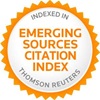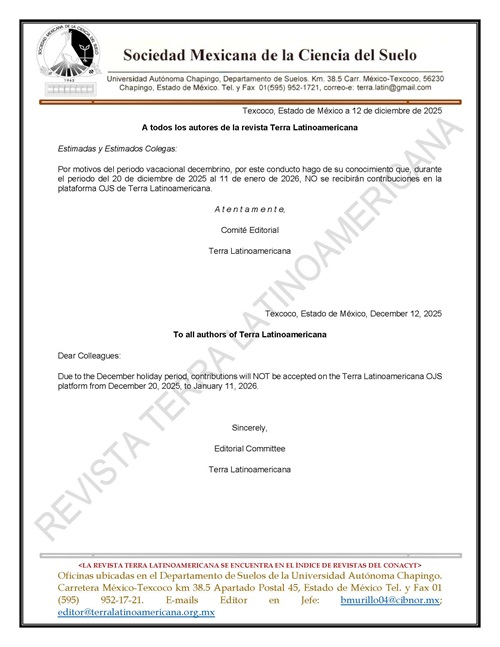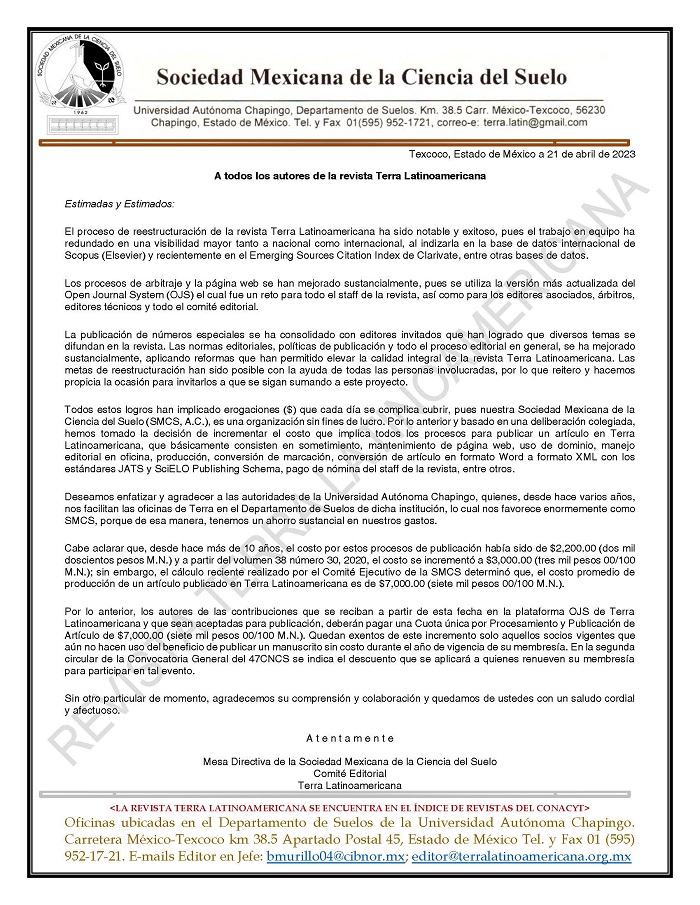Effect of Hydraulic Retention Time on Municipal Wastewater Treatment and Energy Recovery at a Semi-Pilot Scale Using a Modular Bioelectrochemical System
DOI:
https://doi.org/10.28940/terralatinoamericana.v43i.2073Keywords:
coulombic ef ficiency, microbial fuel cell, pathogens, power density, water qualityAbstract
Bioelectrochemical systems (BES) remove high concentrations of organic and inorganic contaminants and generate energy. It has been proven that they are more ef ficient when working with small-volume modules (such as stacks or cascades) than with a large reactor volume. In this work, the ef fect of hydraulic retention time (HRT) on the removal of chemical oxygen demand (COD), biochemical oxygen demand (BOD5), total solids (TS), total suspended solids (TSS), total coliforms (TC), fecal coliforms (FC), helminth eggs (HE), and power generation of a modular bioelectrochemical system consisting of ten dual-compartment microbial fuel cells (MFC) of 2000 mL each during the treatment of municipal wastewater (MWW) was assessed. The increase in HRT had a positive impact. In a 5-h HRT, the removal ef ficiency percentages of COD, BOD5, TS, TSS, TC, FC, and HE were 66.46, 34.18, 36.76, 53.84, 99.99, 99.99, and 91.88%, respectively. Likewise, at this same HRT (5 h), the highest maximum power density of 5.709 mW m-3 and the coulombic ef ficiency of 0.0056% were obtained. Results showed that the modular BES increases energy generation and contaminant removal, especially pathogens (TC, FC, and HE).
Downloads
Publication Facts
Reviewer profiles N/A
Author statements
- Academic society
- Terra Latinoamericana
- Publisher
- Mexican Society of Soil Science, C.A.

















